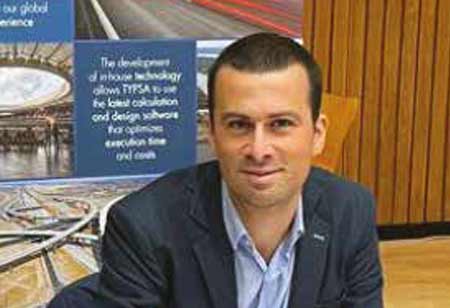Thank you for Subscribing to Construction Business Review Weekly Brief

The Evolution and Modern Challenges of Prefabrication in Concrete Construction
Marco Bonomo brings extensive expertise to his role as a Chartered Civil Engineer. A graduate with a specialization in civil engineering, he has a wealth of experience in transport infrastructures (highways and rails), underground structures, foundations, structural earthquake engineering, and dynamic structures analysis response (for seismic and wind actions). Marco is proficient in both linear and nonlinear finite element (FE) structural analysis.
Passionate about consulting engineering, Marco excels in design management, responding to contractor queries, and attending site progress meetings. His innovative design solutions address complex civil and structural engineering challenges. An expert in using high-end finite element analysis (FEA) software, Marco adeptly analyses, designs, and assesses all types of structures.
Through this article, Bonomo, Head of the Structural Department (UK and Ireland) at TYPSA, shares his insights on the challenges and opportunities in civil and structural engineering. He discusses the evolving infrastructure landscape, strategies for effective design and construction, and the role of advanced technologies in shaping the future of engineering.
Generally, prefabrication is mistakenly linked to the 19th century. However, Mesopotamian civilisations, Egyptians, Ancient Greeks and Romans already used prefabrication thousands of years before. Prefabrication is simply a method of producing standardised components off-site that can be assembled on-site. For this reason, it can be done with most of the materials used in construction. Despite prefabrication being the only option available for some materials, for others, such as concrete, both off-site and on-site options are available. Then, it is legitimate to question when to use one or the other. The main advantages that launched precast concrete products in the early years of the 20th century were for sure:
● Cost optimisation
● Quality control
● Product standardisation
● Construction simplification
● Introduction of new technologies such as prestressed concrete
However, from the beginning, it was clear that there were significant limitations with the precast concrete elements:
● Fewer shape liberties
● Moulds standardisation requirements
● Logistics and transportation constraints
Despite all the designs mentioned above, challenges remain valid in the 21st century; nowadays, there is something more to consider during the design that was not done before sustainability. Considering it is well-proven and established that global warming is an anthropic effect, it is clear that sustainability weight is paramount amongst all the design criteria. It is estimated that around 4-8 percent of the world’s carbon dioxide emissions (CO2) come from the manufacture of cement.
Engaging in discussions with concrete pre-fabricators at the early stages of design is good practice when high percentages of GGBS are considered in the mix design. Failing to do this could ultimately jeopardise the whole carbon footprint life cycle design criteria and, when relaxations are not allowed, resulting in significant cost increases for the project
From a design perspective, precast concrete introduced new challenges, such as:
● Study of construction details
● Study of construction sequences, including erection and installation
Based on these figures, placing concrete and sustainability in the same context is difficult. However, more than 50 percent of the emissions from cement production derive from clinker production; hence, by limiting its usage, concrete can be a more sustainable material. Furthermore, suppose clinker is not replaced by a raw material but by a by-product such as slags. In that case, the total carbon emissions are significantly reduced if it is also accounted for the avoided emissions linked to the slag waste disposal. In the UK, the most popular Portland cement replacement is the Ground Granulated Blast Furnace Slag (GGBS), a by-product of the iron industry, which can achieve percentages up to 80 percent of the Portland cement. The use of GGBS, when it comes to sustainability, has further advantages:
● Enhances the durability, workability and long-term strength of concrete.
● Enhances the resistance to sulfate attack and chloride ingress.
● Mitigates the alkali silica reaction, reducing cracking and degradation issues linked to this chemical reaction.
● Has slower hydration properties compared to clinker usage, which reduces the heat generated during the hardening process, minimising the early-age thermal cracking.
Although this latter point is an excellent advantage for massive structures, it is a humongous downside for the precast industry. In Portland concrete, the parent compounds dissolve during the initial hydration stage, generating a significant amount of heat. Then, it passes through the quiescent or dormant period, where the hydration stops for several hours to restart again, and the concrete moves to the hardening phase. In GGBS concrete, the hydration process is essentially the same, but the higher the GGBS content, the longer the time required to get to the hardening stage. It goes by itself that the longer it takes to produce a standardised concrete unit, the higher the price. Engaging in discussions with concrete pre-fabricators at the early stages of design is good practice when high percentages of GGBS are considered in the mix design. Failing to do this could ultimately jeopardise the whole carbon footprint life cycle design criteria and, when relaxations are not allowed, resulting in significant cost increases for the project.








